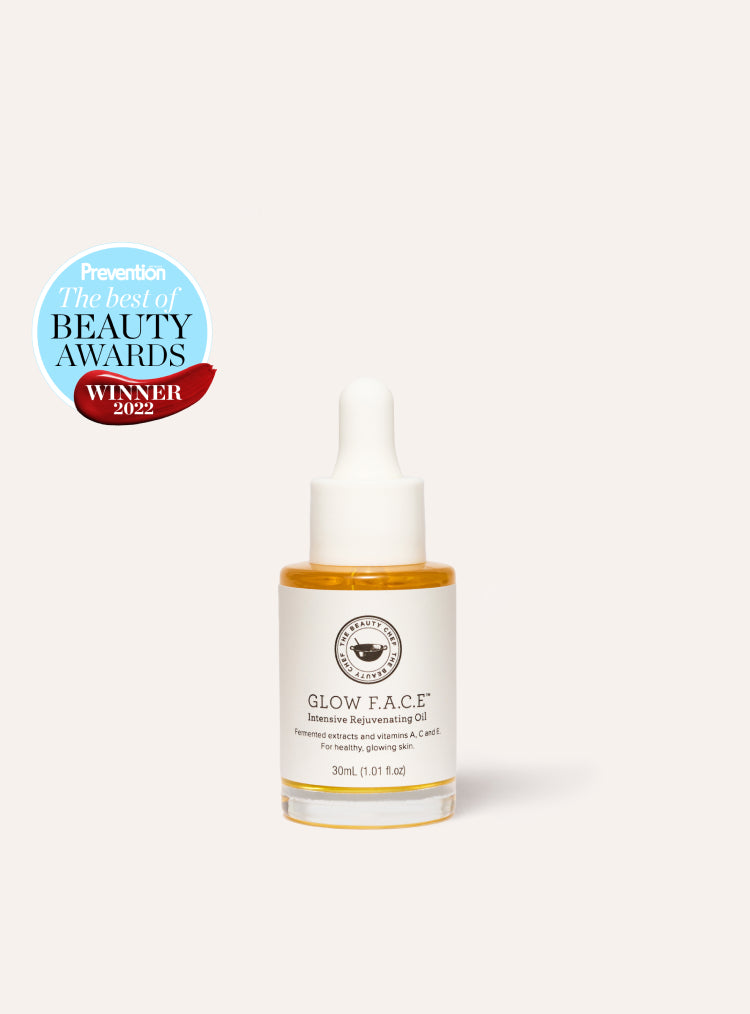
By Carla Oates
If it feels like your daily skincare routine gets longer and longer the more products you purchase—you’re not alone.
With the relatively recent trend towards serums and facial oils taking over the beauty world, it’s no wonder that there is also a great deal of confusion when it comes to these innovative formulas and how to use them effectively. Given they sit outside of the classic: cleanse, tone, moisturise regime we all grew up with, rest assured you’re not the only one who may be struggling to discern the difference between these products.
While the addition of a serum and facial oil may feel indulgent—we're here to argue that they are both, in fact, essential and incredibly useful steps in achieving your skincare goals. And once we break down their key differences, we promise you'll be ready to stock. up.
What Are Serums?
Think of facial serums as a topical skincare supplement—targeted formulas that address specific skin concerns. In fact, if you compare them to our inner beauty products, they would be like your Boosts—amplifying the effects of the rest of your skincare regime. Most often, face serums are also water-based, with a lightweight and smaller molecular structure which helps them to penetrate deep into the dermis—enabling them to infuse your skin with high levels of active ingredients and antioxidants—like hyaluronic acid and vitamin C—that can truly transform your complexion. From brightening to treating ageing, hyperpigmentation, acne, dullness or dryness—there are serums that can target virtually any skin concern.
What Are Facial Oils?
Unlike serums, facial oils or face oils are usually oil-based and have a heavier molecular structure, which helps them to seal and lock moisture into the outermost layers of your skin. Their thicker emollient-like consistency means they should also be applied after your serums and depending on your skin type and its individual needs, you may find that a facial oil is the only hydration and moisture you need. For particularly dry skin types—or during the cooler months when our skin is exposed to harsher temperatures—facial oils can be applied before moisturiser. Usually containing more hydrating plant nutrients, essential oils and anti-inflammatory or plant-based lipids, facial oils help to fortify the skin barrier, keeping it smooth, supple and well-nourished. A common misconception is that facial oils can also only be used by those with dry or normal skin types—when, in fact, even oily skin and acne-prone skin can benefit from using a facial oil. The key is to look for an oil, like GLOW F.A.C.E, that contains non-comedogenic oils like rosehip and jojoba seed oil, as this can help to regulate and balance skin—helping to prevent the overproduction of sebum which can clog pores and lead to breakouts.
How To Use Serums & Facial Oils
The typical rule of thumb when it comes to applying skincare is to apply from thinnest to thickest—meaning that after using your chosen cleanser and toner, you should apply your chosen serum (or serums) one at a time by gently patting a pea-sized amount into your skin. Always allow the serum to penetrate and absorb fully before applying your next product but once skin is prepped—you can then apply your fave facial oil. Remember, less is more so when we apply GLOW F.A.C.E, we find 3–4 drops sufficient to massage into the face, neck and decolletage.
After applying your facial oil, again wait for it to fully absorb before applying your chosen moisturiser (if using) and always follow with sunscreen if you’re heading out for the day. This is the best way to protect your skin from UV damage and the ageing effects of the sun.
The Bottom Line
Skincare should be fun but it should also serve a purpose, so if in doubt, keep it simple. Using highly-efficacious, organic and nutrient-rich products with ensure your skin is left feeling clear, refreshed and ultimately—glowing!






